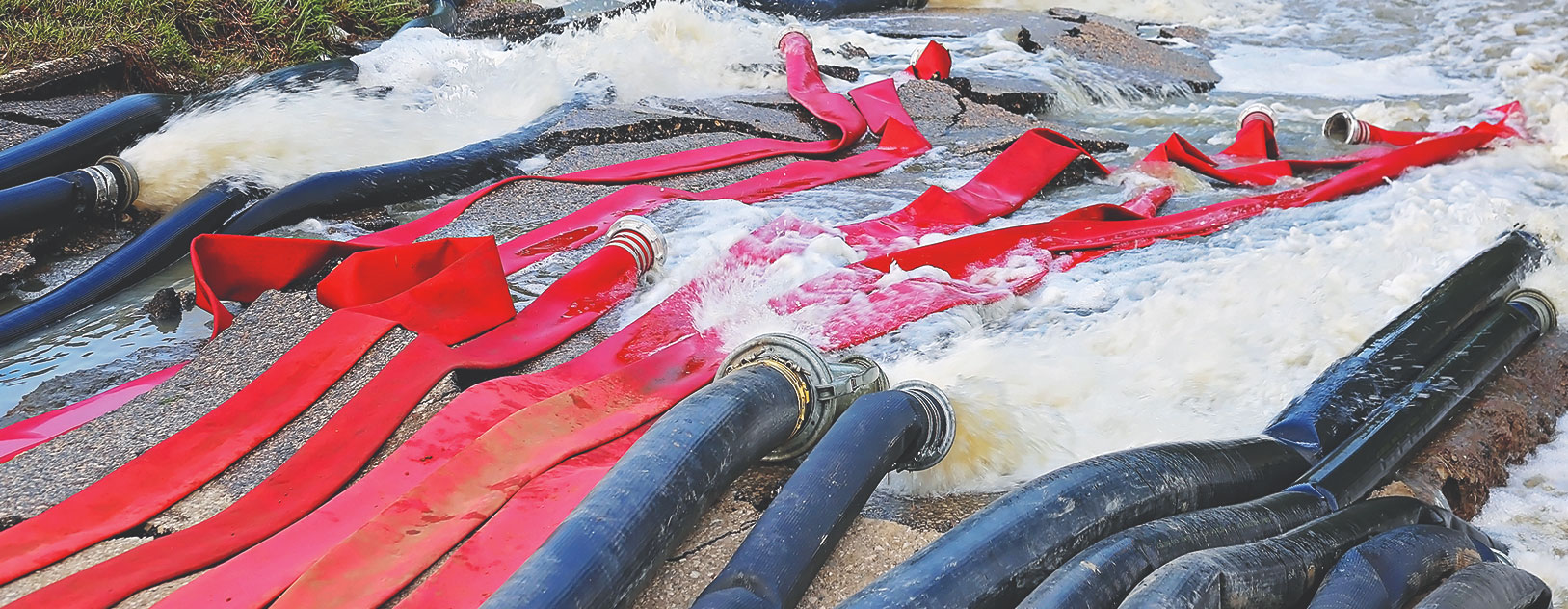Working with fluid transfer lay flat hose
A practical, space-saving, and strong alternative to standard rubber hosing, lay flat hoses have dozens of different uses. Whether you’re looking for a heavy-duty bit of equipment that stands the test of time, or you’re looking for an easy alternative for temporary works, a lay flat hose offers the flexibility and versatility you’re looking for.
Read on to find out more about what a lay flat hose is, how you can use and set up a lay flat hose and more. We’ve got all the details below to help you get started:
What is a lay flat hose?
A lay flat hose is any hose that has a flat, collapsible profile. As opposed to rigid hoses that are rounded, resulting in difficulty in storing and managing the house, lay flat hoses have a far smaller required diameter. This means these strong, flexible hoses are the ideal choice for industries where they would need to be stored and reused frequently. Lay flat hoses have a smaller footprint than standard hoses. They are made over either PVC or specialist reinforced rubber material that’s designed to be incredibly hardy for day-to-day usage.
Lay flat hoses are also resistant to kinks and made from materials that encourage an extended lifespan. Despite all these heavy-duty features, lay flat hoses remain, lightweight, which makes them easy to transport and store without any expensive equipment needed. Their lighter nature also means they can be rolled out by hand, with no extra tools or equipment needed.
Who can use a lay flat hose?
Lay flat hoses are used for a range of different purposes. Thanks to their high resistance, easy storage and practicality, they are often used for heavy industry, irrigation and dewatering in a construction or maintenance settings. Because of the long lifespan, and resistance against common chemicals, lay flat hoses are the ideal choice. These kinds of hoses are also used in mining as well as by emergency services. Lay flat hoses are often used by fire departments thanks to their high reliability and practicality. Alongside these uses, lay flat hoses can also be used for a range of construction industry purposes.
What type of lay flat hose do I have?
The first step to knowing how to use your lay flat hose is knowing what size host you have. The size of your hose will inform the level of working pressure within the hose, as well as the specific clamps and couplings you will need. If you plan on using a lay flat hose with specific equipment that is designed for purpose, you should check the specifications on that equipment. It may be that a specific size of hose is required for proper use. Lay flat hoses can be available typically in 2” bore width all the way up to 8” bore width, so it’s important to know the exact size of the hose you are using. There are also medium-duty and heavy-duty lay flat hoses, each of which has different durability.
Our range includes :
Blue PVC layflat with camlocks
Black rubber layflat with Camlock
Red PVC Layflat hose with camlocks
Red PVC layflat hose with Bauer fittings
Black rubber layflat hose with Bauer
Layflat sold by the meter
How do I install and use a lay flat hose?
Once you have your lay flat hose on-site ready to go, the first step is to roll your hose out. Often, it only takes minutes to roll out a lay flat hose. You should also check for any damage or homes in your hose at this point. Once you’ve completed the first inspection, you can then use specialised fittings to either connect hoses or to connect a hose to a machine. These connectors come in various sizes and shapes, and some equipment comes with specific connectors.
I most cases, lay flat hose is available to purchase by the meter, manufactured in 50m roll lengths, supplied with no connectors or equipment at either end. You can now connect up your hose using camlock or bauer fittings, ensuring a watertight fit. On the other end of the hose, you may wish to leave the hose open or install a nozzle, depending on your individual requirements. Once connectors have been installed, you can use your lay flat hose for as long as you need to. There’s nothing more to the process than that.
How do I put away a lay flat hose?
Once you are done with your lay flat hose, you can remove and put it away ready for transport or use in another area. All you need to do is allow the water to run through, and then remove any connectors. You can then roll your empty lay flat hose back on to its carrier. It’s important not to fold lay flat hose, as this can lead to damage over time as well as holes and other wear and tear. You should also check your lay flat hose for damage after each use, so you know when it requires replacement.
With proper care and maintenance, high-quality lay flat hoses can last for multiple years depending on your level of day-to-day usage. Whether you’re only using a lay flat hose for a one-off job or long-term continued usage, making sure you follow the proper processes for use can improve longevity, ensure less damage and make your hose last even longer.

